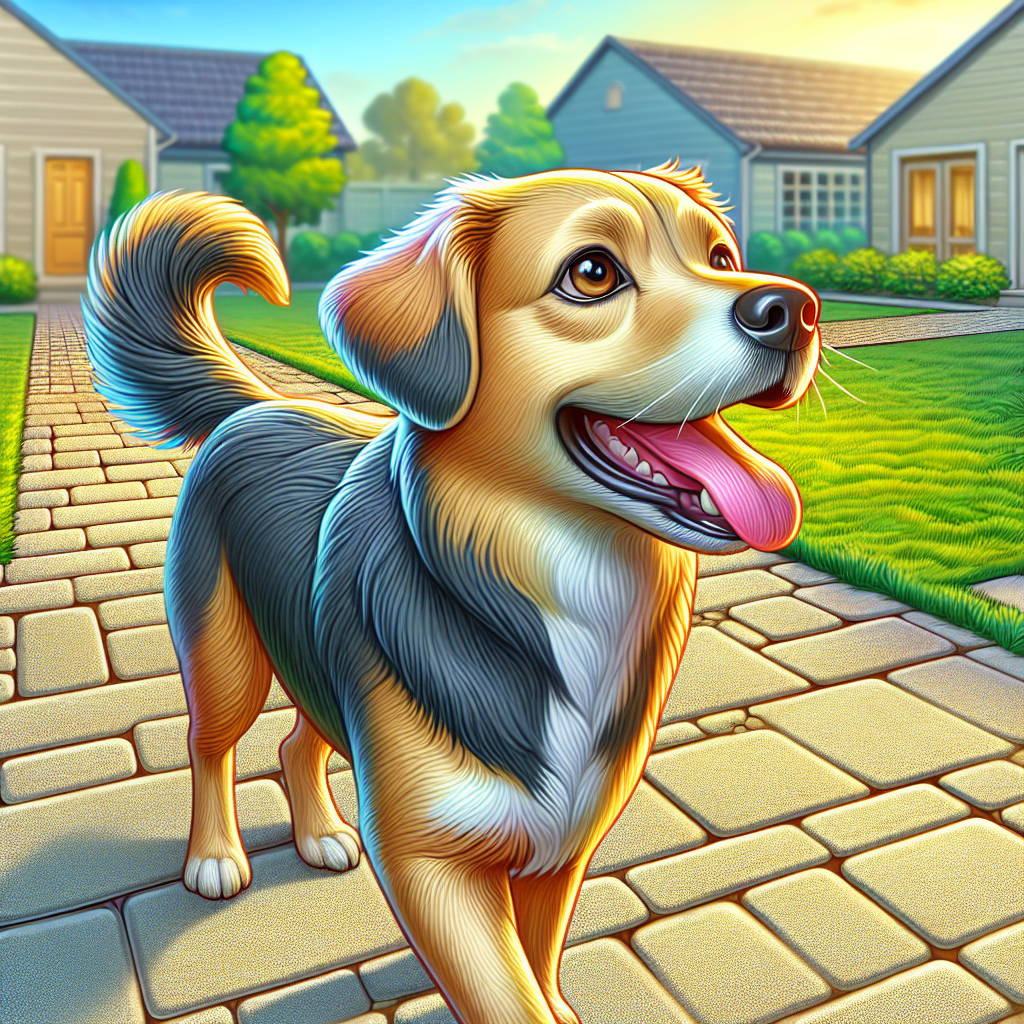Introduction to Natural Flea Remedies for Cats

So, you’ve got a cat. And not just any cat—a flea-attracting feline who thinks your couch is its personal scratching post. Fleas, those pesky little vampires, are the bane of a cat owner’s existence. I’ve been there, trust me. But before you go with those chemical solutions that sound like they belong in a sci-fi movie, let’s talk about natural flea remedies for cats. Yeah, natural. As in, stuff you probably already have lying around your house.
Years back, when I was knee-deep in the pet industry, I stumbled on these methods. I didn’t believe it at first. I mean, dish soap? Really? But it’s true. We’re talking about solutions that don’t require a degree in chemistry or a hazmat suit. These remedies are real, unpolished, and, best of all, they work. Let’s dive into this flea-busting journey, shall we?
The Power of Dish Soap: A Simple Solution
Picture this: It’s a Saturday afternoon, and your cat’s scratching more than a DJ at a rave. You’re at wit’s end. Enter dish soap. Yep, the same stuff you use to clean last night’s lasagna off your plates. It turns out, a dish soap flea treatment for cats is a game-changer.
Don’t ask me how someone figured this out—maybe they were really desperate—but it works like a charm. The idea is simple: fill a tub with warm water and a couple of drops of dish soap. Lather up your furball, making sure to get deep into the fur. Rinse thoroughly. The soap breaks down the flea’s exoskeleton, which sounds kind of like a horror movie plot, but trust me, your cat will thank you.
I remember trying this on my tabby, Whiskers. The look on his face as I dunked him into the sudsy water was priceless. But hey, he stopped scratching for a while. Just make sure you use a gentle soap, nothing too harsh. Our feline friends have sensitive skin, after all.
Lemon Juice: A Citrus Shield
Now, if you told me that lemon juice would be a flea repellent for cats, I’d have laughed in your face. But here we are. Lemons are more than just an addition to your iced tea—they’re a natural flea deterrent. Fleas hate citrus, and lemon juice is like their kryptonite.
Here’s the play-by-play. Boil a pot of water, slice a couple of lemons, and toss them in. Let it steep overnight. By morning, you’ve got a natural flea spray that’ll keep those pesky critters at bay. Give your cat a spritz or two, focusing on the areas where fleas like to hang out—like their neck and behind the ears.
I tried this on my neighbor’s cat once. The cat was less than thrilled about the whole lemony experience, but the fleas? They packed their bags and left town. Just a heads-up, though—don’t overdo it. Cats and too much citrus don’t exactly mix well.
Herbal Allies: Neem and Rosemary
Now, we’re getting a bit fancier. Neem oil and rosemary—sounds like a hipster café menu, doesn’t it? But when it comes to neem oil for fleas on cats, it’s the real deal. Neem is like nature’s answer to chemical flea treatments. It’s safe and effective.
A few drops of neem oil mixed with water can make a handy spray. Spritz your cat, avoiding the eyes, and watch as the fleas start to rethink their life choices. Rosemary, on the other hand, is like the wingman to neem. You can make a rosemary rinse by boiling it in water, let it cool, and pour it over your cat after a bath.
I’ve seen rosemary work wonders. I once helped a friend whose cat was practically a flea hotel. After a couple of rosemary rinses, the fleas were history. Just remember, consistency is key. Keep at it, and those fleas won’t stand a chance.
Everyday Items: Baking Soda and Apple Cider Vinegar
Here’s where things get really interesting. Baking soda and apple cider vinegar—two things you probably have in your kitchen right now. First up, baking soda flea control for cats. It’s simple. Sprinkle it on your cat’s fur, rub it in, and leave it for a while. It dehydrates the fleas, making them easier to brush out.
I’ve done this with my own cats, and let me tell you—flea combs and vacuum cleaners became my best friends. Just make sure to vacuum thoroughly afterward. You don’t want baking soda dust bunnies roaming your house.
And then there’s apple cider vinegar for cats fleas. Mix equal parts vinegar and water, and give your feline a gentle spray. The smell isn’t pleasant, but fleas hate it more than you do. Just be careful not to get it in their eyes.
I’ve got a soft spot for apple cider vinegar. It’s like that old reliable friend who’s always got your back. A little vinegar, a little patience, and soon your cat will be flea-free.
Flea battles aren’t easy, but armed with these natural remedies, you’re ready. Thanks for sticking around, and good luck with your flea-fighting endeavors. Your cat’s comfort is worth it.
The Power of Essential Oils: Friend or Foe?
Alright, cat lovers, let’s dig into this aromatic rabbit hole. Essential oils for cat fleas sound like magic, right? Some folks swear by them. Lavender, cedarwood—these names pop up like old friends at a reunion. But hold your horses. Cats aren’t just tiny humans with fur—they’re their own kind of sensitive. So, when we talk about flea-repelling essential oils for cats, we need to tread lightly.
Cats, those sneaky little furballs, can react differently to these oils than dogs or humans. Their livers don’t process stuff the same way ours do. A drop too many might send them into a tizzy. But don’t toss out your essential oils just yet. Some have found that a diluted concoction of lavender can help keep fleas at bay. The trick? Moderation. A few drops mixed with water in a spray bottle can do wonders—just remember, always check with a vet.
There’s a thin line between friend and foe when it comes to essential oils. The key is knowing which side you’re on. It’s like walking on a tightrope, and nobody wants to fall. But if you can balance, you might just find that these oils are the natural flea remedy for cats you’ve been looking for all along.
Household Items to the Rescue: Pantry Power
Now, if you’re anything like me, you spend too much time in the kitchen—not just eating but snooping around for unexpected solutions. And guess what? Your pantry is a goldmine for homemade flea treatments for cats. Look at what you’ve got—vinegar, salt, baking soda. These aren’t just for cooking anymore.
Vinegar is like that old friend who never lets you down. Mix it with water, and you’ve got a simple spray that repels fleas. Fleas hate the stuff. And salt? Not just for fries. Sprinkle it on your carpet, leave it overnight, and vacuum. It dries out those pesky flea eggs. Baking soda’s the same deal.
This isn’t wizardry, folks. It’s just common sense. Natural flea remedies from the pantry are cheap, easy, and you probably already have them. Who knew that the key to a flea-free life was sitting next to the cereal? It’s like finding out your cat can actually use the toilet. Mind-blowing.
The Great Outdoors: Garden Allies
Let’s step outside for a minute. Garden plants that repel fleas are out there waiting for you. They’re like the unsung heroes of the plant world. Picture this: rosemary and lemongrass standing tall, ready to tackle the flea brigade.
These plants aren’t just for spicing up your dinner. They pack a punch when it comes to pests. Plant them around your yard, and you’ve got an army of flea-fighting soldiers. It’s not just about the plants, though. It’s about what they represent. A natural, no-nonsense way to keep your cat flea-free.
You don’t need a green thumb to make this work. Just a bit of dirt, some seeds, and the willingness to let nature do its thing. Your garden becomes a fortress, and your cat? A flea-free king or queen, reigning over their kingdom. So, grab your shovel and get planting. Your cat will thank you.
Time-Tested Tricks from Grandma’s Book
Ah, Grandma. She always had a trick up her sleeve, didn’t she? Traditional flea remedies for cats have been floating around for ages. And guess what? They work. Sometimes, the old ways are the best ways.
Remember those stories she told while knitting by the fire? They weren’t just tales—they were wisdom wrapped in comfort. Things like using a bit of lemon juice or a pinch of garlic in your cat’s diet. These might seem old-fashioned, but they can pack a punch.
It’s like opening a time capsule filled with knowledge. You’re not just fighting fleas; you’re connecting with a past where people relied on what they had. No fancy gadgets or overpriced treatments—just simple, effective solutions.
So next time you’re struggling with fleas, think of Grandma. Open her book of tricks and let history guide you. Sometimes, the answers are right where you least expect them.
Bath Time Rituals: A Soothing Solution
Now, let’s talk about the dreaded bath time. If your cat’s anything like mine, they treat water like it’s lava. But a good bath can be a soothing solution—a real game-changer. Cat flea bath solutions don’t have to be a nightmare. With the right approach, it can even be… pleasant?
Grab some gentle, cat-friendly soap, and work it into their fur. It’s like giving them a day at the spa, minus the cucumber slices. Homemade flea treatments for cats don’t come more straightforward than this. Plus, you get the added bonus of a clean, fresh-smelling kitty.
Don’t expect miracles, though. Some cats will never love water, and that’s okay. But with patience and the right touch, you can make bath time a regular part of your flea-fighting routine.
So, there you have it. A flea-free life is within reach, and it doesn’t have to cost the earth. Keep it simple, keep it natural, and above all, keep it real. Your cat—and your sanity—will thank you.
The Backyard Pharmacy: Herbs and Spices
Alright, folks, gather ’round. Let’s talk about the untapped potential of your backyard—it’s not just a patch of grass and dirt. It’s a goldmine for natural flea remedies for cats using herbs. Picture this: you step outside, and there it is—nature’s pharmacy, waiting for you to pluck the right herbs and spices to keep your feline friend flea-free.
Now, I know what you’re thinking. Herbs? Spices? For fleas? Yep, you heard me right. Basil, rosemary, and lemongrass aren’t just for sprucing up your Sunday roast. These herbs pack a punch against fleas. Rosemary can repel those pesky critters, while basil acts as a natural deterrent. Just a sprinkle here, a dash there, and you’ve got yourself a flea-fighting cocktail. It’s like having a secret weapon right under your nose. So next time you’re out there, take a moment to appreciate those green wonders. They’re doing more than just looking pretty.
And let’s not forget about the spices. Cinnamon and clove might smell like Christmas, but to fleas, they’re more like a no-entry sign. A little sprinkle around your cat’s favorite hangout can do wonders. Just don’t go overboard—your kitty’s not a gingerbread man.
Bath Time Adventures: DIY Flea Shampoo
Ah, bath time. The words alone might make you shiver, especially if you’ve got a cat who thinks water is the enemy. But let me paint a picture for you: a homemade flea shampoo for cats. It’s easier than you think, and it doesn’t require a PhD in chemistry.
Grab some dish soap—yeah, the stuff you use on your plates—and mix it with a bit of apple cider vinegar. Toss in a few drops of essential oils like lavender or eucalyptus, and voila, you’ve got a natural flea remedy for cats that’s both effective and affordable. It’s like a spa day, minus the cucumber slices over the eyes.
Now, I won’t sugarcoat it. Getting your cat into the tub is no walk in the park. You might need a rubber ducky and a sense of humor. Maybe even a raincoat. But once you’re in the thick of it, lathering up that homemade concoction, you’ll feel like a mad scientist—minus the lab coat.
The Power of Prevention: How to Keep Fleas Away
Prevention, my friends, is where it’s at. Fleas love warm, cozy spots—don’t we all? But your job is to make your kitty’s fur less inviting. It’s like hosting a party and forgetting to send out the invites. They just won’t show up.
First, let’s talk preventive measures for fleas in cats. Keep your home clean. Vacuum frequently, wash bedding and keep clutter to a minimum. Fleas are like those unwelcome relatives who show up and never leave. If your house is tidy, they’ll have nowhere to hide.
And speaking of prevention, let’s not forget those little flea collars. They’re like the unsung heroes of flea prevention. Just pop one on your cat, and it’s like giving fleas the boot before they even step inside.
A Stitch in Time: Regular Check-Ups and Grooming
Now, let’s talk about something that might seem like a chore—regular vet visits for flea control. I know, I know. Who wants to spend their Saturday morning in a waiting room? But hear me out. Those check-ups? They’re like a stitch in time.
Your vet can spot things you might miss. Early signs of fleas, subtle changes in your cat’s coat, things like that. It’s like having an extra set of eyes to watch over your furry friend. So, don’t skip those visits. They’re not just for hypochondriacs.
And while we’re on the subject of looking after your cat, let’s not forget grooming tips for flea prevention in cats. Regular brushing can catch fleas before they multiply. Plus, it’s a great bonding time—just you, your cat, and a brush. Simple as that.
The Final Meow: Your Role in Keeping Kitty Flea-Free
Alright, cat lovers, here’s the deal. In this flea-fighting tale, you’re the hero. Your role in keeping your kitty flea-free is crucial. You’ve got the knowledge, you’ve got the tools—now it’s your time to shine.
Keep your home clean. Use those herbs and spices. Give that DIY flea shampoo a whirl. And don’t forget those vet visits—think of them as an investment in your cat’s health. With these flea prevention tips for cat owners, you’ll be well-equipped to keep those pesky fleas at bay.
So, there you have it. A no-frills guide to natural flea remedies for cats. Thanks for sticking around. Wishing you and your feline buddy all the best—go get ’em, tiger!
Quick Takeaways:
Alright, folks. Let’s cut to the chase—natural flea remedies for cats are the way to go if you’re looking to ditch the chemicals. First, there’s the trusty dish soap flea treatment for cats. A simple bath with dish soap can do wonders—just watch those fleas wave goodbye. Next, let’s not forget about lemon juice flea repellent for cats. A spritz of lemon juice is like a citrusy eviction notice for fleas. Then there’s neem oil for fleas on cats; a drop or two rubbed into their fur can send those critters packing. Baking soda flea control for cats? Oh yes, it’s a classic. Sprinkle it around, and you’ll have fleas thinking twice about their life choices. Apple cider vinegar for cats’ fleas is another pantry staple that packs a punch. Finally, garden plants that repel fleas like rosemary can be your secret weapon. Sprinkle some rosemary flea prevention for cats around their bedding, and you’re in business.
But wait, there’s more. Essential oils for cat fleas can help, but be careful—some oils can be too strong for our feline friends. Homemade flea treatments for cats are all about getting creative. Cat flea bath solutions? Sure, keep it simple and effective. And if you’re into history, traditional flea remedies for cats bring a bit of old-school charm to the mix. So, whether you’re raiding your pantry or tending your garden, remember—nature has your back.
FAQs:
1.
What’s a good natural flea remedy for cats?
A natural flea remedy for cats can be as simple as a dish soap bath. Just a small amount of dish soap in warm water can help trap and kill fleas. Another option is lemon juice; a diluted spray can be a deterrent. Both are easy and affordable solutions.
2.
Is apple cider vinegar effective for fleas on cats?
Yes, apple cider vinegar for cats’ fleas is a popular choice. Mix one part vinegar with two parts water and use it as a spray. It’s not a killer, but it can make your cat less appealing to fleas. Just make sure your feline friend doesn’t mind the smell!
3.
Can baking soda help with flea control on cats?
Indeed, baking soda flea control for cats is a tried-and-true method. Sprinkle it on carpets and furniture, let it sit, and vacuum it up. It dehydrates fleas, making your home a less hospitable place for them. It’s a simple, non-toxic approach.
4.
Are essential oils safe for cat fleas?
Essential oils can be tricky—some are safe, and others not so much. Flea-repelling essential oils for cats like cedarwood and lavender can be effective, but always dilute them and use sparingly. Cats are sensitive creatures, so a little goes a long way.
5.
How do garden plants help in flea prevention for cats?
Garden plants that repel fleas, like rosemary and lemongrass, are great natural deterrents. You can plant them around your yard or use dried rosemary flea prevention for cats by sprinkling it near their bedding. It’s a green thumb’s approach to keeping fleas at bay.
Conclusion:
So, what’s the takeaway here? Natural flea remedies for cats aren’t just for the eco-conscious. They’re for anyone who wants to keep their feline friend comfortable without resorting to harsh chemicals. We’ve got dish soap, lemon juice, neem oil, and even baking soda—all ready to join the fight. And don’t overlook the power of apple cider vinegar or the calming scent of rosemary. When in doubt, a homemade flea treatment for cats can provide peace of mind.
But remember, every cat is unique. What works wonders for one might not be the best for another. It’s about finding the right balance and keeping your furry buddy’s comfort in mind. So go ahead, raid your pantry, tend to your garden, and try these natural solutions. Your cat might not thank you directly—cats being cats—but their comfort and happiness will say more than words ever could.
Thanks for sticking with me, dear readers. May your cats be flea-free and your days filled with contentment.
References:
1. https://www.thesprucepets.com/home-remedies-for-fleas-on-cats-4580388
2. https://www.petmd.com/cat/general-health/natural-flea-treatment-for-cats
3. https://www.treehugger.com/natural-flea-remedies-cats-and-dogs-4864286
4. https://www.onlynaturalpet.com/collections/natural-flea-tick-control-for-cats
5. https://earthanimal.com/product/apothecary-natural-flea-tick-herbal-spot-on-for-cats-kittens/
Our solution eradicates fleas on contact without harmful chemicals, ensuring a safe environment for your pets and family. Easy to use and highly effective, SayByeBugs helps you maintain a flea-free home. Learn more and order today at SayByeBugs.com
Our solution eradicates fleas on contact without harmful chemicals, ensuring a safe environment for your pets and family. Easy to use and highly effective, SayByeBugs helps you maintain a flea-free home. Learn more and order today at SayByeBugs.com








